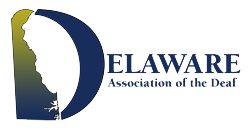In a scrubby patch of forest near Halifax, Saint Mary’s University professor Linda Campbell and her master’s student, Michael Smith, squelch through mud, looking for lichens. The lichens they’re after can be used as natural biological monitors of pollutants from former gold-mining sites, like this one.
Smith lifts one piece from a branch. It’s usnea, or beard lichen, which the researchers can use to assess levels of arsenic and mercury in the air. That’s because it absorbs nutrients — and pollutants, if they’re present — from the atmosphere rather than through roots.
Campbell notes that there were once industrial devices used to crush gold-bearing ore at the site where this lichen is now growing. The lichen is absorbing mercury initially released from the ore many years ago, that is still percolating out into the environment. “What took place 100 years ago is still being reflected in the lichen,” she said.
Campbell is a freshwater ecologist — one of a handful of experts in Canada who’s studied how contaminants move through ecosystems, and how to deal with them.
But she’s also part of another minority. Campbell is Deaf, and uses American Sign Language, or ASL, making her part of a group that continues to be underrepresented in science.
A report from earlier this year by the Royal Society in the U.K., for instance, noted that while about one per cent of the population is deaf, the percentage of STEM undergraduates in that country who are deaf has stagnated at just 0.3 per cent for the past decade. And, a 2017 U.S. study by the National Deaf Center on Postsecondary Outcomes found that, overall, Deaf people obtain lower levels of education than their hearing peers.
In Canada, there is little formal data, but, anecdotally, Campbell knows of only five other deaf STEM university faculty members.
Campbell attributes the underrepresentation to barriers erected by attitudes among hearing people.
“When science looks at that as an added cost, and added labour, to include people with disabilities, they’re not recognizing the differences and the successes that can be brought — that diverse thinking can be successful.”

